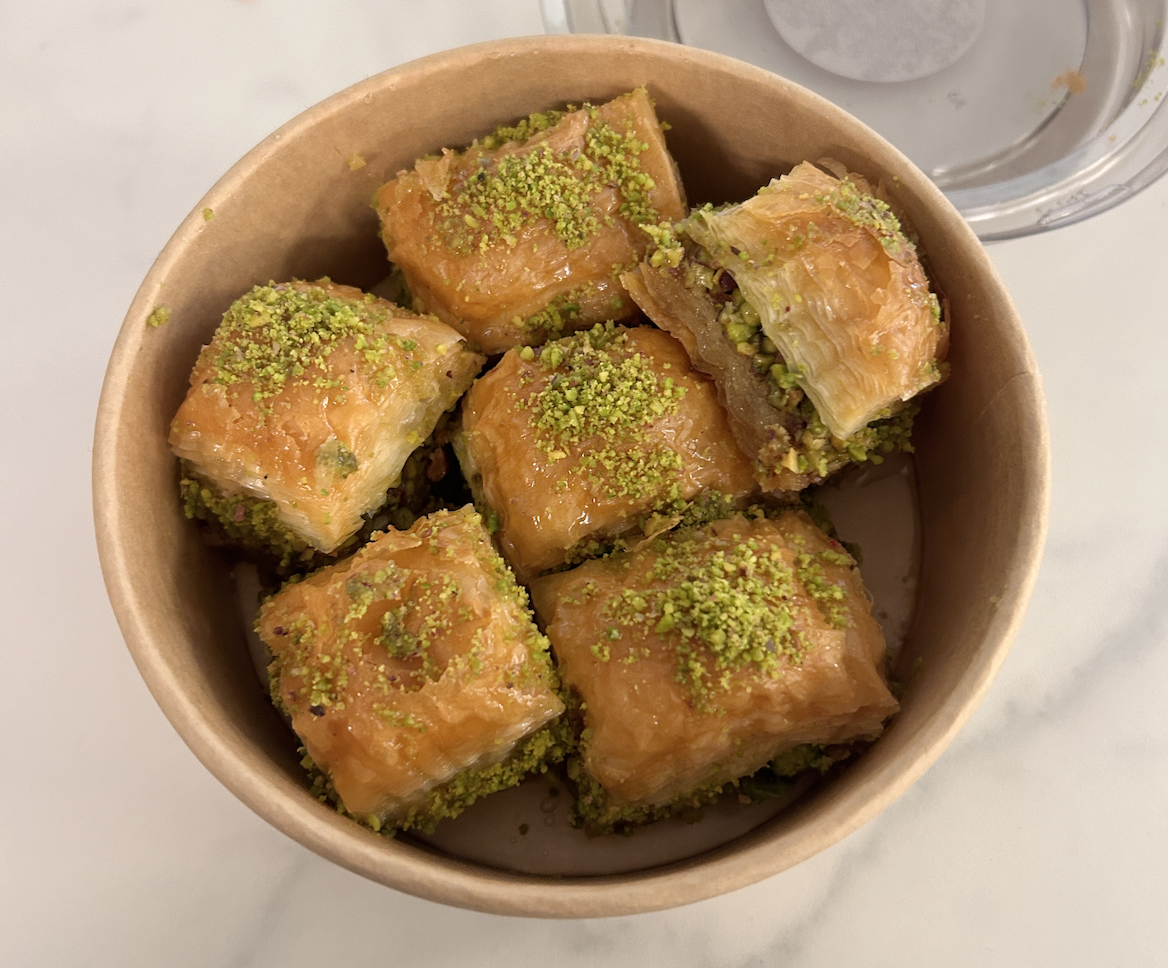idefics3
Maintainer: zsxkib

1

| Property | Value |
|---|---|
| Run this model | Run on Replicate |
| API spec | View on Replicate |
| Github link | No Github link provided |
| Paper link | View on Arxiv |
Create account to get full access
Model overview
Idefics3-8B-Llama3 is a powerful multimodal AI model developed by Hugging Face that can handle a wide range of tasks involving both text and images. It builds upon previous versions of the Idefics model, Idefics1 and Idefics2, with significant enhancements in areas like optical character recognition (OCR), document understanding, and visual reasoning.
Similar models include sdxl-lightning-4step from ByteDance, which is a fast text-to-image model, and uform-gen from zsxkib, a multimodal language model for image captioning and visual question answering. Another related model is Idefics3-8B-Llama3 from HuggingFaceM4, which is an enhanced version of the original Idefics model.
Model inputs and outputs
Idefics3-8B-Llama3 is designed to handle multimodal inputs consisting of both text and images. The model can accept a text query along with one or more images, and it can then generate text-based responses that draw upon the visual and textual information provided.
Inputs
- Text: A text query or prompt
- Image(s): One or more images, which can be arbitrarily interleaved with the text
Outputs
- Text: The model's response, which can include descriptions, answers to questions, or other text-based output
Capabilities
Idefics3-8B-Llama3 demonstrates significant improvements over its predecessors, particularly in document understanding tasks. It can be used for a variety of multimodal applications, such as image captioning, visual question answering, and even generating stories grounded in multiple images.
What can I use it for?
The Idefics3-8B-Llama3 model can be used for a wide range of multimodal tasks, such as:
- Image Captioning: Generating descriptive text captions for images
- Visual Question Answering: Answering questions about the content of images
- Multimodal Dialogue: Engaging in conversations that involve both text and images
The model's strong performance on document understanding tasks also makes it a useful tool for applications like automated document processing and analysis.
Things to try
One interesting aspect of Idefics3-8B-Llama3 is its ability to handle prompts that interleave text and images. Try providing a series of images and text queries, and observe how the model integrates the visual and textual information to generate its responses.
Additionally, you can experiment with different decoding strategies, such as adjusting the temperature and top-p parameters, to see how they affect the creativity and coherence of the model's outputs.
This summary was produced with help from an AI and may contain inaccuracies - check out the links to read the original source documents!
Related Models

sdxl-lightning-4step

414.6K
sdxl-lightning-4step is a fast text-to-image model developed by ByteDance that can generate high-quality images in just 4 steps. It is similar to other fast diffusion models like AnimateDiff-Lightning and Instant-ID MultiControlNet, which also aim to speed up the image generation process. Unlike the original Stable Diffusion model, these fast models sacrifice some flexibility and control to achieve faster generation times. Model inputs and outputs The sdxl-lightning-4step model takes in a text prompt and various parameters to control the output image, such as the width, height, number of images, and guidance scale. The model can output up to 4 images at a time, with a recommended image size of 1024x1024 or 1280x1280 pixels. Inputs Prompt**: The text prompt describing the desired image Negative prompt**: A prompt that describes what the model should not generate Width**: The width of the output image Height**: The height of the output image Num outputs**: The number of images to generate (up to 4) Scheduler**: The algorithm used to sample the latent space Guidance scale**: The scale for classifier-free guidance, which controls the trade-off between fidelity to the prompt and sample diversity Num inference steps**: The number of denoising steps, with 4 recommended for best results Seed**: A random seed to control the output image Outputs Image(s)**: One or more images generated based on the input prompt and parameters Capabilities The sdxl-lightning-4step model is capable of generating a wide variety of images based on text prompts, from realistic scenes to imaginative and creative compositions. The model's 4-step generation process allows it to produce high-quality results quickly, making it suitable for applications that require fast image generation. What can I use it for? The sdxl-lightning-4step model could be useful for applications that need to generate images in real-time, such as video game asset generation, interactive storytelling, or augmented reality experiences. Businesses could also use the model to quickly generate product visualization, marketing imagery, or custom artwork based on client prompts. Creatives may find the model helpful for ideation, concept development, or rapid prototyping. Things to try One interesting thing to try with the sdxl-lightning-4step model is to experiment with the guidance scale parameter. By adjusting the guidance scale, you can control the balance between fidelity to the prompt and diversity of the output. Lower guidance scales may result in more unexpected and imaginative images, while higher scales will produce outputs that are closer to the specified prompt.
Updated Invalid Date

uform-gen

5
uform-gen is a versatile multimodal AI model developed by zsxkib that can perform a range of tasks including image captioning, visual question answering (VQA), and multimodal chat. Compared to similar large language models (LLMs) like instant-id, sdxl-lightning-4step, and gfpgan, uform-gen is designed to be more efficient and compact, with a smaller model size of 1.5B parameters yet still delivering strong performance. Model inputs and outputs The uform-gen model takes two primary inputs: an image and a prompt. The image can be provided as a URL or a file, and the prompt is a natural language description that guides the model's content generation. Inputs Image**: An image to be captioned or used for visual question answering. Prompt**: A natural language description that provides guidance for the model's output. Outputs Captioned image**: The model can generate a detailed caption describing the contents of the input image. Answered question**: For visual question answering tasks, the model can provide a natural language response to a question about the input image. Multimodal chat**: The model can engage in open-ended conversation, incorporating both text and image inputs from the user. Capabilities The uform-gen model is capable of generating high-quality, coherent text based on visual inputs. It can produce detailed captions that summarize the key elements of an image, as well as provide relevant and informative responses to questions about the image's contents. Additionally, the model's multimodal chat capabilities allow it to engage in more open-ended, conversational interactions that incorporate both text and image inputs. What can I use it for? The uform-gen model's versatility makes it a useful tool for a variety of applications, such as: Image captioning**: Automatically generating captions for images to aid in search, organization, or accessibility. Visual question answering**: Answering questions about the contents of an image, which could be useful for tasks like product search or visual analytics. Multimodal chatbots**: Building chat-based assistants that can understand and respond to both text and visual inputs, enabling more natural and engaging interactions. Things to try One interesting aspect of the uform-gen model is its relatively small size compared to other LLMs, yet it still maintains strong performance across a range of multimodal tasks. This makes it well-suited for deployment on edge devices or in resource-constrained environments, where efficiency and low latency are important. You could experiment with using uform-gen for tasks like: Enhancing product search and recommendation systems by incorporating visual and textual information. Building chatbots for customer service or education that can understand and respond to visual inputs. Automating image captioning and visual question answering for applications in fields like journalism, social media, or scientific research. The model's compact size and multilingual capabilities also make it a promising candidate for further development and deployment in a wide range of real-world scenarios.
Updated Invalid Date

codellama-34b

15.2K
codellama-34b is a 34 billion parameter language model developed by Meta that is tuned for coding and conversation. It is part of the Code Llama family of models, which also includes CodeLlama-7b, CodeLlama-13b, CodeLlama-34b-Instruct, CodeLlama-13b-Instruct, and CodeLlama-70b-Instruct. These models are based on the open-source Llama 2 language model and have been fine-tuned to excel at coding and programming tasks. Model inputs and outputs The codellama-34b model takes natural language prompts as input and generates continuation text as output. The prompts can be related to coding, programming, or general conversation, and the model will attempt to provide relevant and coherent responses. Inputs Natural language prompts related to coding, programming, or general conversation Outputs Continuation text that is relevant and coherent with the input prompt Capabilities The codellama-34b model has state-of-the-art performance among open-source language models for coding and programming tasks. It can generate working code, explain programming concepts, and engage in open-ended conversations. The model also has the ability to perform code infilling, where it can fill in missing parts of code based on the surrounding context. What can I use it for? codellama-34b can be used for a variety of applications, including: Generating code snippets or entire programs based on natural language prompts Explaining programming concepts and answering coding-related questions Engaging in open-ended conversations about technology, coding, and related topics Assisting with code development by performing tasks like code completion and code infilling Companies and developers can use codellama-34b to enhance their existing products or build new applications that leverage the model's natural language understanding and generation capabilities. Things to try You can experiment with codellama-34b by trying different types of prompts, such as: Asking the model to generate a function or program that performs a specific task Prompting the model to explain a programming concept or algorithm Engaging the model in a conversation about a technical topic and observing its responses Providing the model with partially completed code and asking it to fill in the missing parts By exploring the model's capabilities through various prompts and tasks, you can gain insights into its strengths and limitations, and explore ways to integrate it into your own projects and applications.
Updated Invalid Date

idefics-8b

5
The idefics-8b model is an open multimodal transformer that accepts arbitrary sequences of image and text inputs and produces text outputs. It was developed by lucataco and is similar to other multimodal models like idefics2-8b and fuyu-8b. These models can handle a variety of multimodal tasks like image captioning, visual question answering, and generating stories grounded in images. Model inputs and outputs The idefics-8b model accepts arbitrary sequences of image and text inputs and produces text outputs. This allows for quite flexible interactions, where the model can handle mixed inputs of images and text. Inputs Image**: A grayscale input image Prompt**: An input prompt to guide the model's text generation Outputs Output**: The model's generated text output in response to the provided inputs Capabilities The idefics-8b model demonstrates strong multimodal capabilities, allowing it to perform well on tasks that require understanding and reasoning about both visual and textual information. It can be used for applications like image captioning, visual question answering, and generating stories grounded in visual inputs. What can I use it for? The idefics-8b model provides a versatile foundation for building multimodal AI applications. Some potential use cases include: Visual question answering**: Given an image and a question about the image, the model can provide an relevant textual answer. Image captioning**: The model can generate descriptive captions for images. Multimodal storytelling**: By combining images and text prompts, the model can generate stories that are grounded in the visual inputs. Things to try One interesting aspect of the idefics-8b model is its ability to handle mixed inputs of images and text. You could try providing the model with a sequence of images and text, and see how it responds and integrates the different modalities. Additionally, you could experiment with giving the model prompts that require both visual and textual understanding, to see the limits of its multimodal reasoning capabilities.
Updated Invalid Date